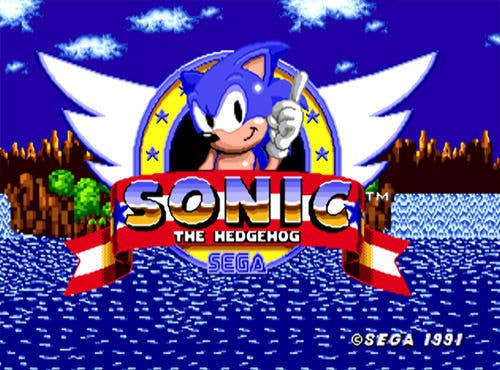What's up with Sega's retro strategy?
DLC: Sega explains its unfocused approach to legacy content, Subset Games on the importance of in-house ports, and a 38 Studios vet talks inevitability of unionization
From time to time, there are interesting bits from GamesIndustry.biz coverage that don't really fit well into the rest of the story, but are still worth reporting. Rather than relegate them to the trash bin of unpublished work, we'd like to repackage them into columns intended to provide additional insight on a variety of topics. While the exact format of these columns is still taking shape, we will publish them under the banner of "DLC."
Sonic the HodgePodge
There was a lot of big news on the Sega retro front last month. The company started launching its Sega Ages collection of games on the Switch, announced its Sega Genesis/MegaDrive collection would be arriving on the Switch this winter, and pushed the release of the Mega Drive Mini micro console back to 2019.

Of course, those aren't the only ways Sega has chosen to monetize its catalog of retro offerings. There were the 3DS versions of the Sega Ages collection, which were revamped to take advantage of the system's glasses-free 3D screen. There were the a la carte re-releases of 16-bit games on Steam. There were the Sega Forever free-to-play versions of the usual suspects on Google Play and the App Store. There was even a long-running partnering with AtGames that saw the pair churn out Genesis micro consoles years before the NES Classic hit the scene (although the quality was often lacking).
One could look at this approach to catalog monetization and conclude there's never been a better time to be a person who really, really wants new ways to buy the original Sonic the Hedgehog. Or one could conclude that Sega doesn't really have a coherent strategy about how to leverage its legacy content in the current market. We asked Sega Europe SVP of commercial publishing John Clark about the throughline in the company's retro strategies when we spoke to him at E3.
"It's looking for viable routes to service the community and really trying to figure out the best way to bring the right content at the right time on the right platform," Clark said. "There is a thought process that goes behind it. At times, it can be opportunistic as well as strategic. Sometimes it's joined up and sometimes it's less joined up.
"It's one of the wonders of working for an organization as diverse and open as Sega. Sega is a big organization that, certainly in the 11 years I've been there, supports initiatives that may come from a local level as well as grand initiatives that come from a different level, a more strategic level. When you see the patterns, the different variety of ways our retro content is released, it's as much a grand strategy as it is localized initiatives. It's incredible working with an organization that supports both."
Into the Breach, onto the Switch
Into the Breach was an instant hit for Subset Games when it launched on PC in February, and Nintendo Switch fans welcomed the surprise launch of the game on their system of choice some six months later. In between those two debuts, we spoke to Subset's Justin Ma and asked him about why Subset doesn't hire other people to port its games. (The studio also handled the iPad port of its first game, FTL, in-house.)

"I think that stuff is a huge stresser, and we're trying to avoid as much stress as possible," Ma said.
But it wasn't just the difficulty of trying to pass certification for a console release at the same time as going through QA and getting the initial release ready.
"To be quite honest, we're not great businessmen or studio runners," Ma said. "This sort of stuff is not our strength, being able to manage meetings and talking to different distribution companies... it's just not something we're good at. Hopefully gamers and fans can put up with this side of us, but we'd much rather focus on one thing, get it out the door, then focus on another thing and get it out the door.
"I see other people who are launching game-to-game on three consoles and I don't understand how they do it. It boggles my mind. I know you can work with port houses and it's very likely we will to some extent, but we just have too much creative investment in the experience.
"Maybe half of the work with Into the Breach was on the user interface. So we're not going to hand off the controller settings to someone else to try and make it work over there. Even if someone's porting the technical stuff, we're going to be working on the UI and design full-time for that time period, just by virtue of who we are."
If a sterling Metacritic score is anything to go by, Subset's approach to ports works just fine.
Storm's a-coming
Last month's collapse of Telltale left hundreds of developers in the lurch with no severance pay or health care. Even with the number of studio closures that happen in the industry, it's thankfully not often we see so many so completely hung out to dry. The 2012 demise of 38 Studios set a new low bar for that sort of trainwreck studio closure, but the impact it had on the employees varied greatly from person to person.
We spoke with one of those ex-38 Studios developers, Zak Garriss, earlier this year. While the conversation was mostly about his work on Life is Strange: Before the Storm, we also asked about his experience with 38 Studios, and why he left the games industry for a time.

Garriss explained that he'd never been to college before joining the games industry, so he took the dissolution of 38 Studios as an opportunity to take care of that by attending Reed College in Portland. While it would be understandable if 38 Studios had soured him on game development, Garriss said it wasn't so much a negative move away from games as an eager move toward something he hadn't experienced previously.
That said, Garriss clearly understood why developers could be up in arms about the precariousness of their situation and their lack of leverage in dealing with employers. He believes it's "kind of inevitable" that the games industry gets unionized, and expects that transition to be similar to one that took place in Hollywood years ago.
"There are ways in which Hollywood is fundamentally different from the development world, but a lot of the interests, a lot of the exploitation, and a lot of the challenges that we're seeing throughout the conversation--publisher-side, dev-side--are really similar to the discussions and the movements that happened between studios and writers in Hollywood a while ago," Garriss said.
"And I think the interests people are vocalizing more and more toward fixing the problems that absolutely plague the industry are not new. I don't know the answer. I don't know that unionizing is absolutely the right thing to do, but what I definitely know is true is that we've got to fix the problems we have. We've got to create better boundaries that protect the dev community from annihilating itself in the work."








